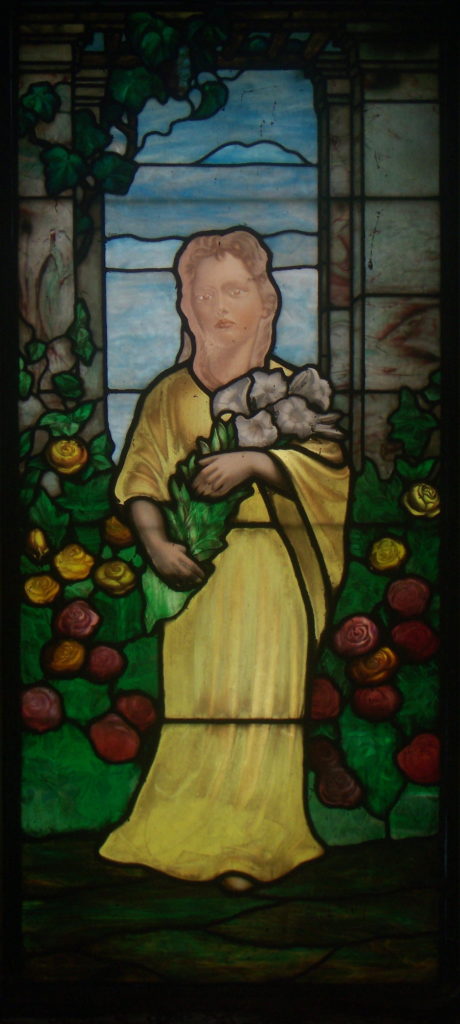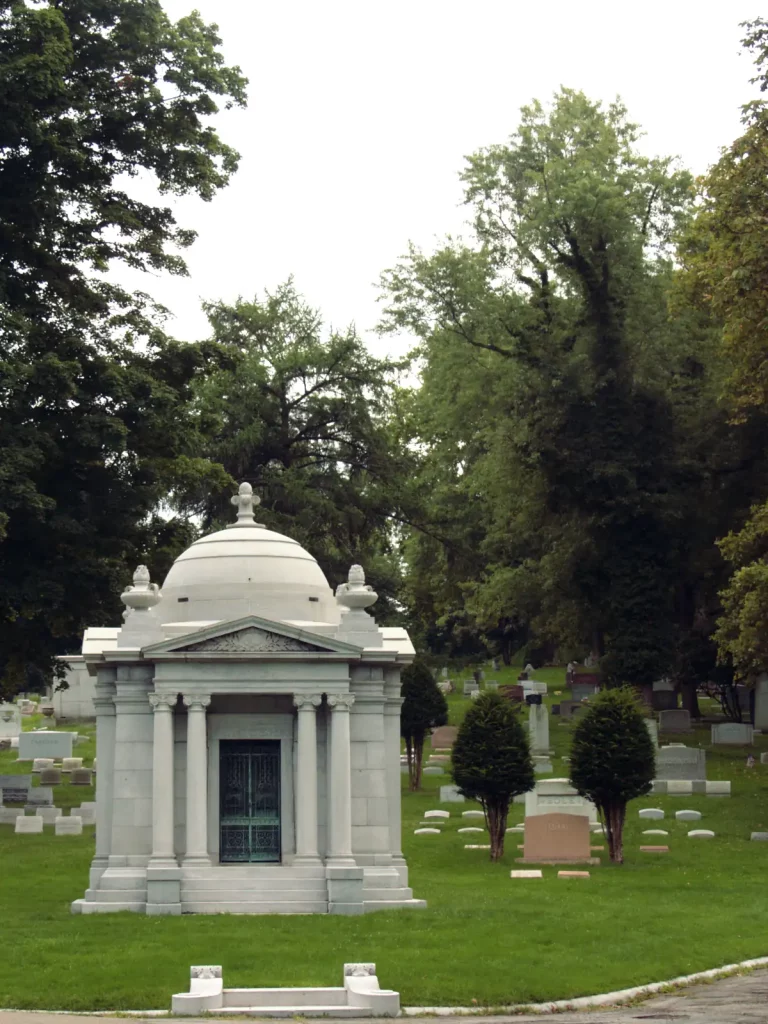
A rather Jeffersonian basilica with a dome and a porch with “modern Ionic” columns. It was built in 1903 for William Henry Singer, a steel baron, who lived six more years to enjoy looking at it from the outside.

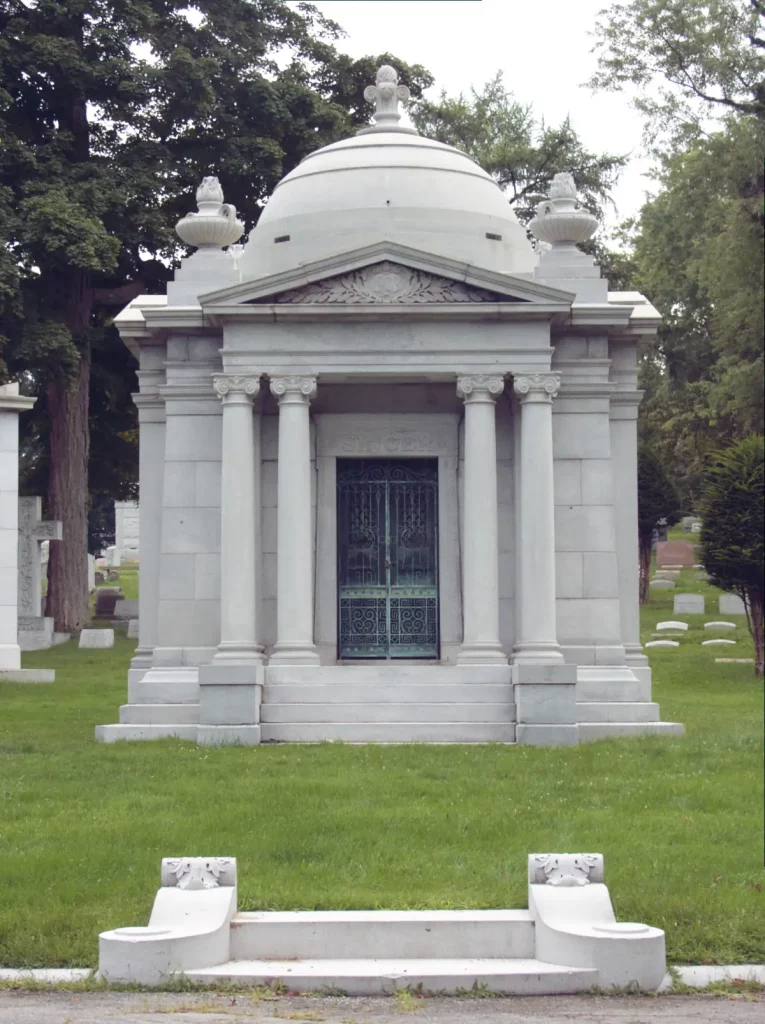

A rather Jeffersonian basilica with a dome and a porch with “modern Ionic” columns. It was built in 1903 for William Henry Singer, a steel baron, who lived six more years to enjoy looking at it from the outside.


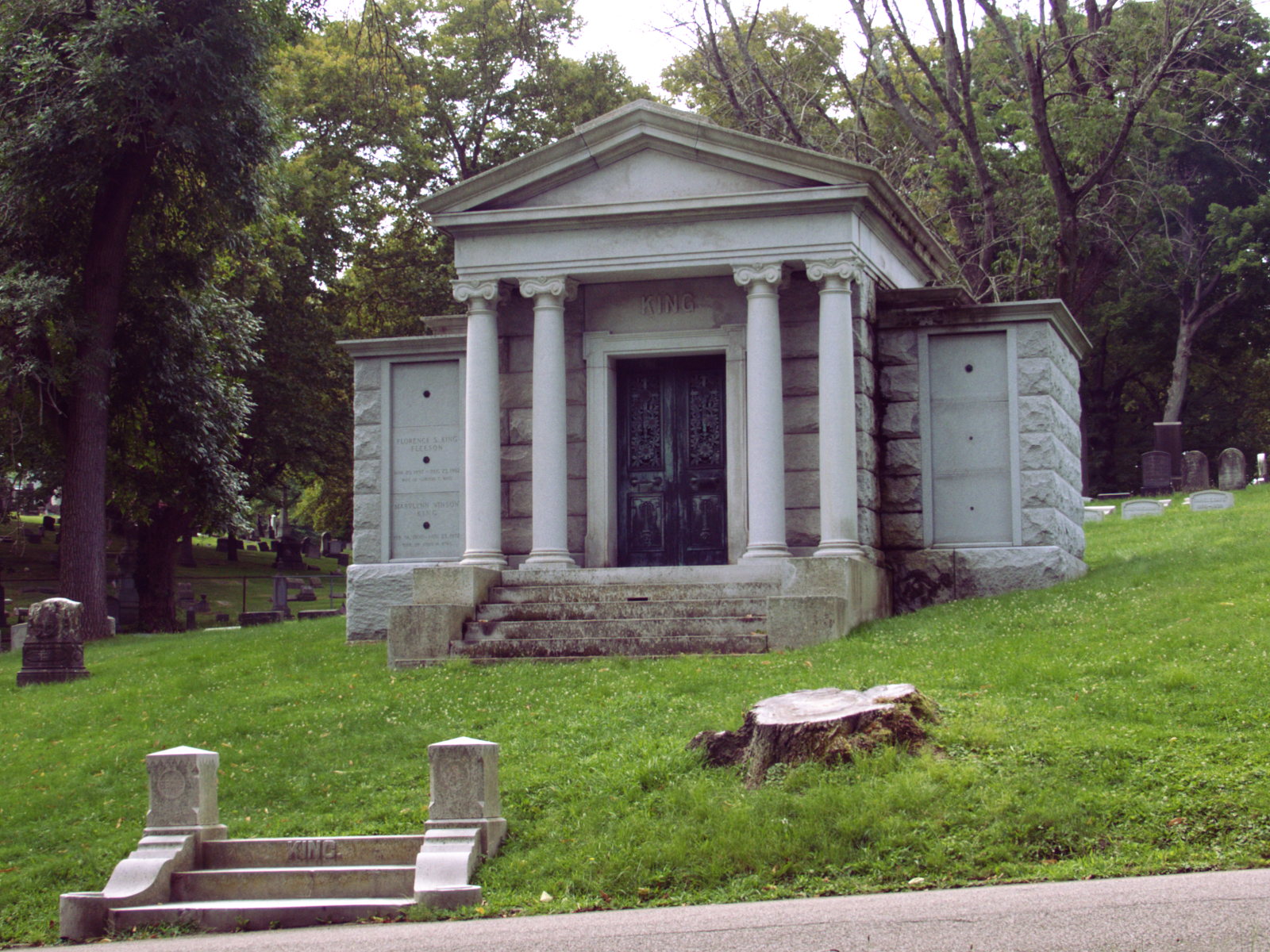
What began in 1899 as a standard rusticated temple in the “modern Ionic” style was expanded in 1973 by the very unusual addition of left and right wings, where the crypts are accessible directly from the outside. The bronze doors have grilles with a striking passionflower pattern. According to the cemetery’s Web site, Mr. Robert Davidson King made his fortune in county government, which was a profitable business in those days.


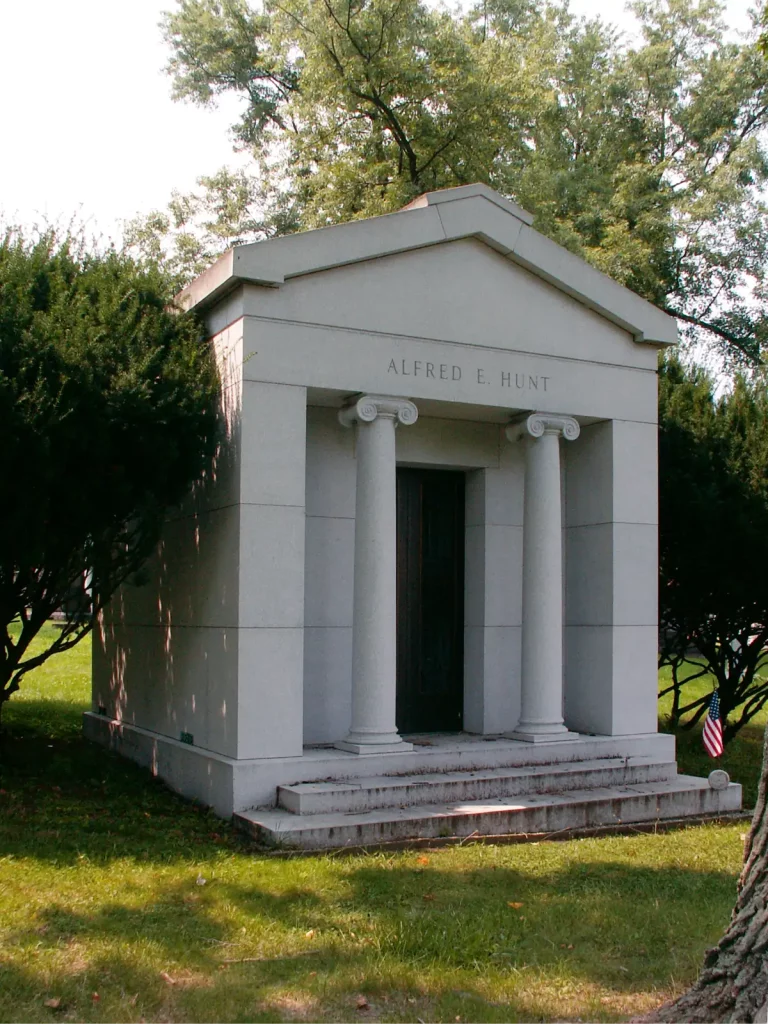
Alfred E. Hunt was a pioneer in the aluminum business; he founded the company that became Alcoa and made aluminum a useful commodity rather than a laboratory curiosity. Oddly, although Hunt died in 1899, his mausoleum was not built until 1930. Father Pitt does not know the reason for the long delay. Inside this simple Ionic structure is a beautiful patterned stained-glass window.
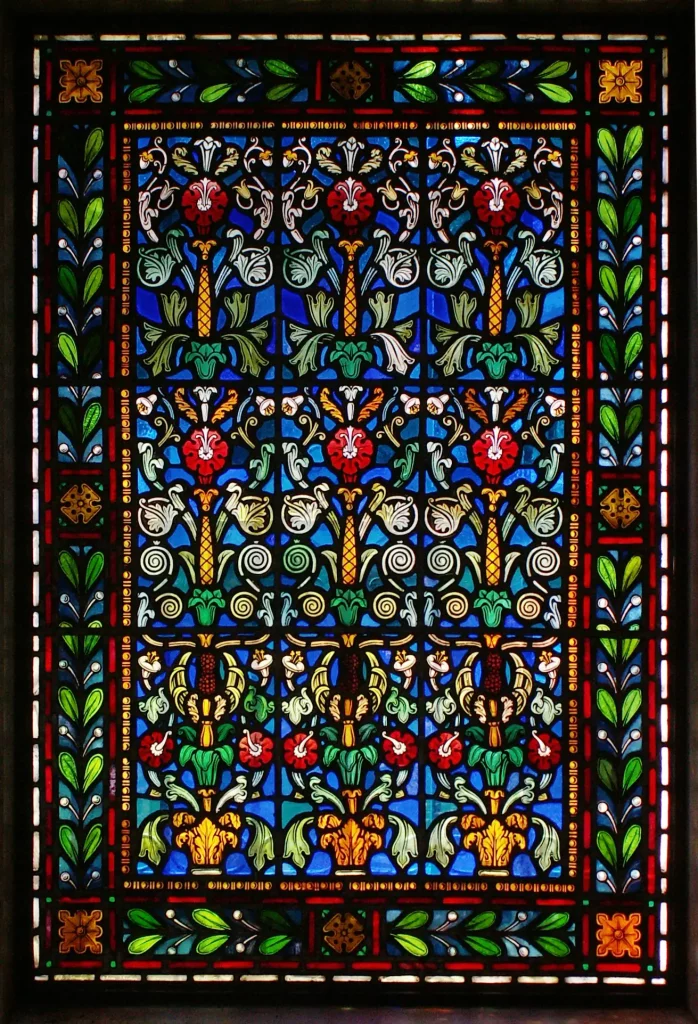
The pictures in this article are released under the Creative Commons CC0 Universal Public Domain Declaration, so no permission is needed to use them for any purpose.

A statue, perhaps of a wingless recording angel (writing “Blessed are the dead which die in the Lord”), tops a tastefully simple classical monument.
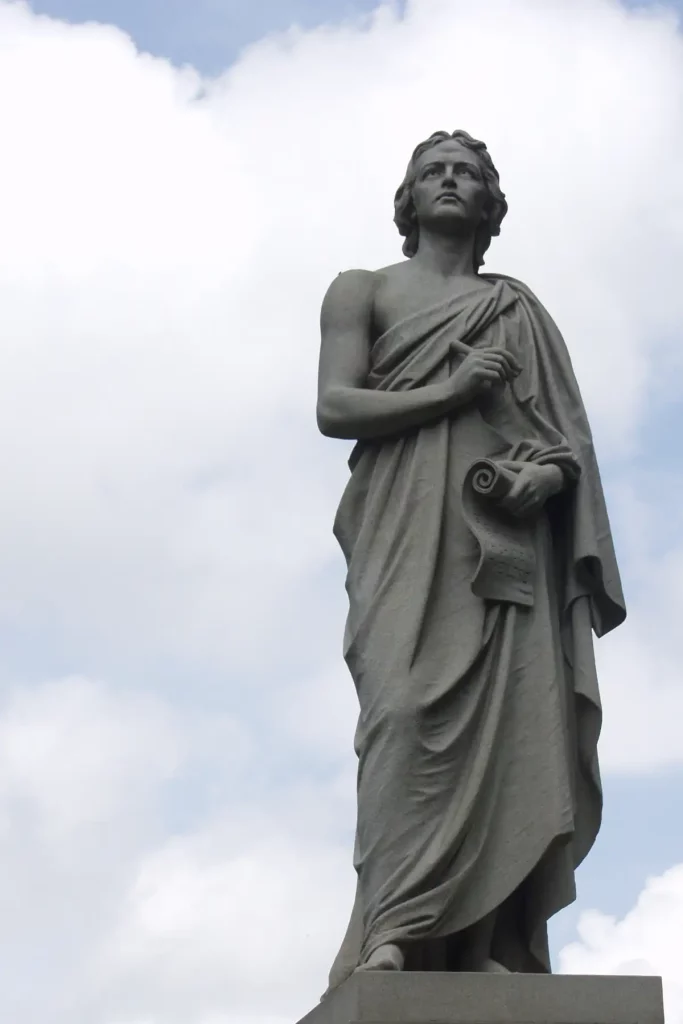


A rusticated temple in the Modern Ionic style, notable for its fine stained glass. The painting in the face and lilies has faded, but we can still imagine how it must have looked when it was fresh.
